Rules of the Road for Boats: Essential Guidelines for Nautical Safety
Navigating the waterways requires a clear understanding of the rules of the road for boats. Much like driving on land, boaters must follow specific regulations and guidelines to ensure safe and efficient passage for all vessels. These rules are crucial in preventing accidents, ensuring proper communication between boat operators, and maintaining order on the water.
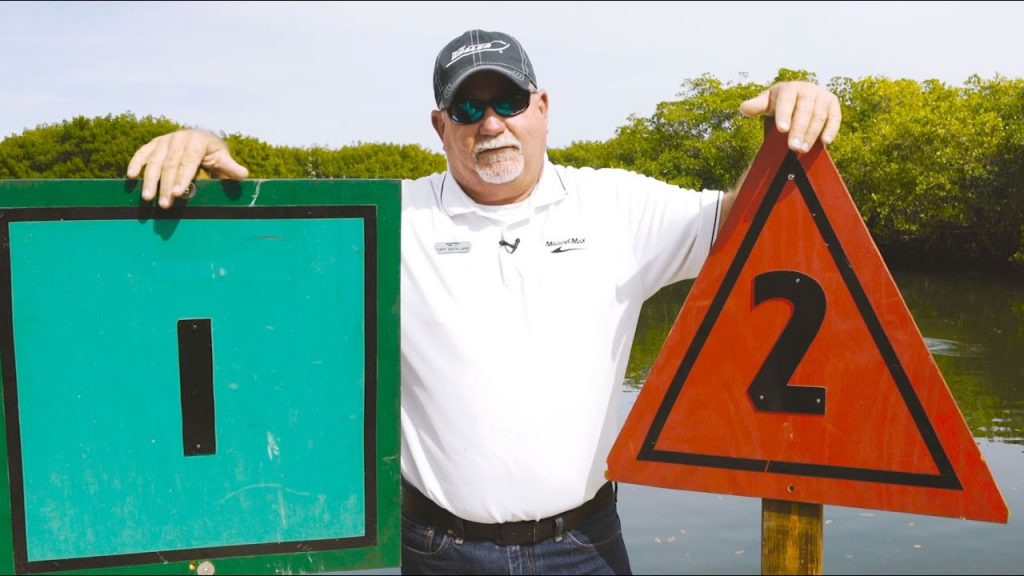
Different types of vessels, from small recreational boats to commercial ships, coexist on the water, making it imperative to be well-versed in navigation rules and practices. These rules cover various aspects such as right of way, priority, signals, and navigating through different water types. It's essential for boaters to keep safety at the forefront of their minds, ensuring not just their own well-being but others on the water as well.
Key Takeaways
- The rules of the road for boats are essential for safe navigation and preventing accidents
- Boat operators must be familiar with navigation rules, right of way, and signaling practices
- Proper boating etiquette and safety measures ensure a smooth and enjoyable experience on the water
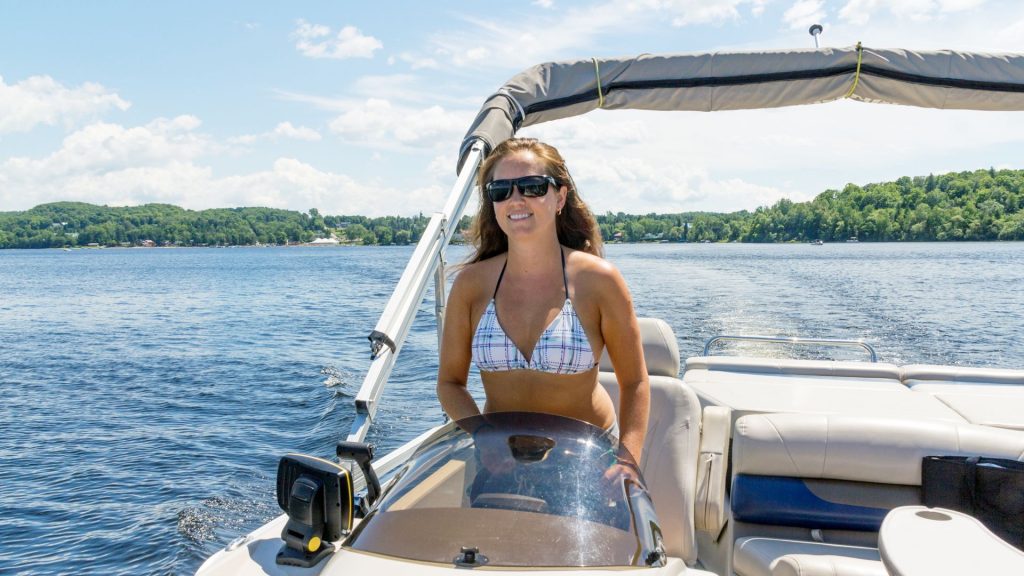
Understanding Vessel Types
Classification and Roles
When navigating the waters, it is essential to understand the different vessel types and their roles. This knowledge is crucial for following the rules of the road for boats, ensuring smooth and safe travel.
Sailing Vessels are boats primarily propelled by wind using sails. They are often used for recreational purposes and come in various sizes and designs. When under sail alone, sailing vessels have certain rights of way over power-driven vessels.
Power-driven Vessels rely on engines for propulsion rather than sails. These boats include motorboats, yachts, personal watercraft, and large commercial vessels. When encountering sailing vessels under sail, power-driven vessels generally need to yield.

Commercial Vessels are those involved in business operations, such as cargo ships, passenger ships, and tugboats. Due to their size and maneuverability limitations, other vessels must consider their actions in order to avoid dangerous situations.
Fishing Vessels are boats specifically designed and equipped for catching fish and other marine life. They can be encountered with fishing gear attached, which might restrict their ability to maneuver. When navigating around fishing vessels, it is important to give them ample space and be aware of potential gear hazards.
By understanding the various vessel types and their roles, boaters can navigate with confidence and clarity, adhering to the necessary rules and regulations while ensuring safety on the water.
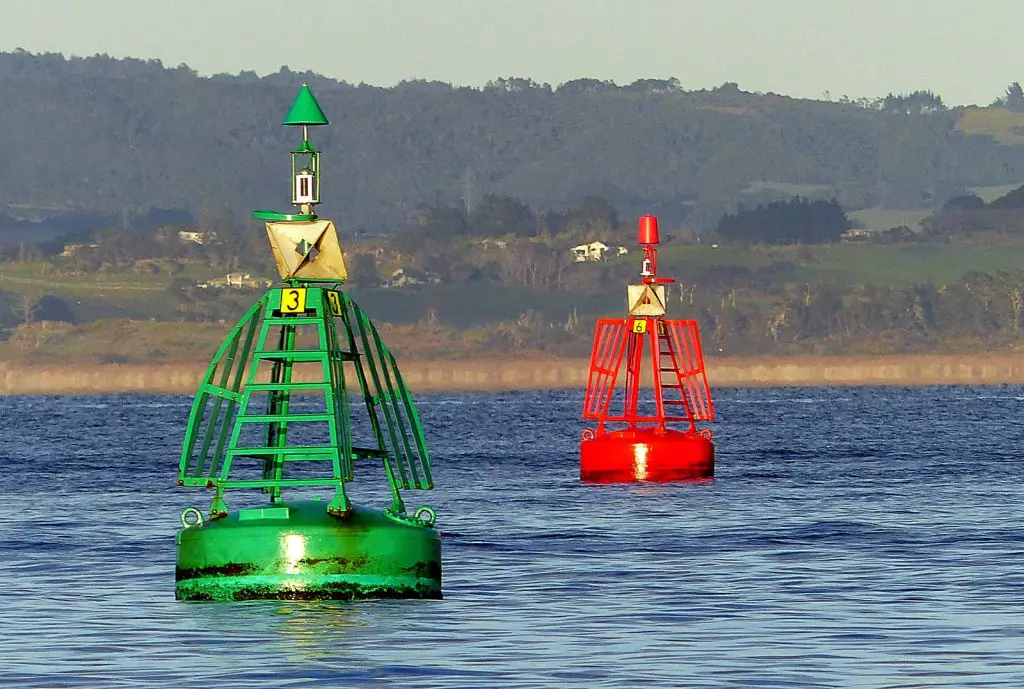
Navigation Rules Basics
Navigating a boat comes with a set of responsibilities, and adhering to the established navigation rules helps in ensuring the safety of everyone on the water. It's essential for boat owners and operators to understand these rules and abide by them at all times.
Inland and International Rules Differences
While there are numerous navigation rules, they can generally be divided into two categories: inland rules and international rules. In the United States, inland rules are applicable to boats operating in the waters of the country, such as rivers and lakes, while international rules apply to boats sailing out in the open sea and internationally connected water bodies.
Inland rules are usually more specific and detailed, catering to the unique characteristics and challenges posed by the varied waterways within a country. On the other hand, international rules serve as a universally accepted set of guidelines, enabling boats from different countries to interact safely with one another while navigating international waters.

It's important to note that there may be minor differences in the rules depending on where you're operating your boat, so always staying informed and prepared is recommended. Boat owners should have a copy of the navigation rules, which are mandatory to be kept on vessels over 12 meters (39.4 feet) in length.
Some of the key aspects covered by the navigation rules include right of way, boat passing protocols, and the proper use of navigation aids. By following these rules diligently, boat operators can reduce the risk of accidents, maintain order in waterways, and ensure a safe boating environment for all.
In conclusion, understanding the differences between inland and international navigation rules is essential for boat operators. Familiarizing oneself with these rules and consistently following them will contribute to overall safety and a pleasant boating experience.

Right of Way and Priority
Pecking Order in Boating
When it comes to navigating the waters, understanding the right of way and priority in boating is crucial to ensure safety and prevent collisions. The rules governing these situations are often referred to as the Navigation Rules of the Road.
In boating, there is no established right of way like there is on the road. Instead, boaters must follow a priority system, or "pecking order" to determine which vessel should yield or give way in specific circumstances. This system is based on the vessel type and activity.
The pecking order starts with vessels that are the least maneuverable and have the greatest restrictions. These include boats that are:
- Not under command
- Restricted in their ability to maneuver
- Engaged in fishing with nets, lines or trawls
Following these are vessels that are more maneuverable but still need to be given consideration, such as:
- Sailing vessels
- Power-driven vessels

In general, power-driven vessels should give way to sailboats, as they have more control and flexibility in their movements. However, this is not always the case, and there may be situations where a sailboat must give way to a power-driven vessel.
When two boats approach each other, the one responsible for yielding (or giving way) needs to alter its course to avoid a collision. In a head-on situation, both boats should veer to the right, ensuring they pass each other safely source.
It is important to remember that safety always takes precedence, and every boater is obligated to take necessary actions to avoid a collision, even if they believe they have the right of way or priority. By being conscious of the pecking order and staying vigilant while on the water, boaters can ensure a safe and enjoyable experience for all parties involved.
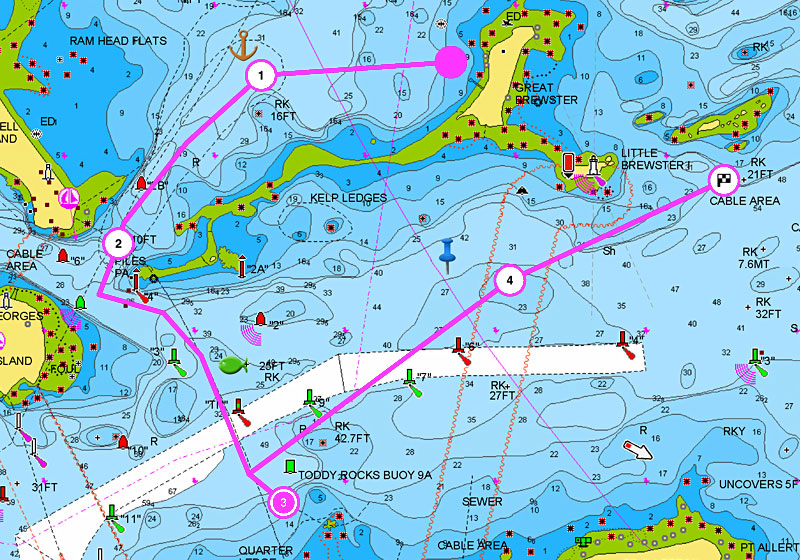
Dealing with Specific Situations
Boating involves various scenarios that require adherence to specific rules to ensure the safety of everyone on the water. In this section, we will explore the appropriate actions to take when encountering crossing and overtaking situations.
Crossing and Overtaking
Crossing Situation: When two boats are crossing paths, it's crucial to determine which boat has the right of way. The boat with the other vessel on its starboard (right) side should be given priority. On the other hand, the boat on the port (left) side should yield and avoid interfering with the other boat's course.
- Action: The boat on the port side should slow down or change course to pass behind the boat with the right of way.
Overtaking Situation: In an overtaking situation, the boat being overtaken has the right of way, and the overtaking boat must yield and take necessary action to avoid collision.
- Action: The overtaking boat should pass on either side of the overtaken boat but maintain a safe distance. It is important to communicate with the overtaken boat to ensure both parties are aware of each other's intentions.
Head-On Situation: When two power-driven vessels are converging on a head-on course, neither one has the right of way. In this circumstance, both boats must take action to avoid a collision.
- Action: Both boats should alter their courses to starboard (right) and pass each other on their respective port (left) sides.
Understanding and adhering to these rules helps ensure a safe and enjoyable boating experience for everyone involved. Always remain vigilant and maintain proper communication with other vessels to avoid potential collisions and unsafe situations on the water.
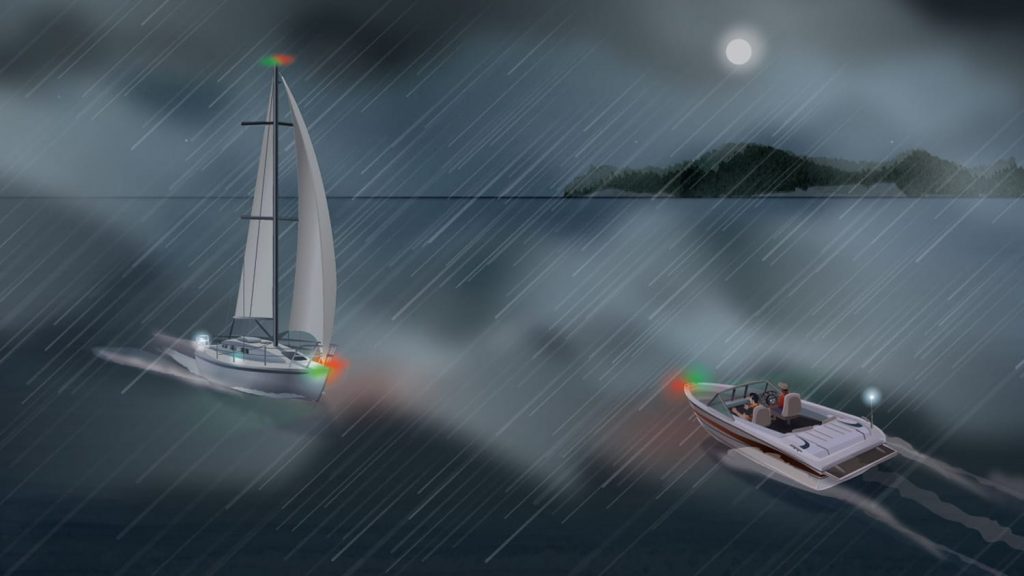
Understanding Signals
Sound and Light Signals
When navigating on the water, it is crucial to understand the various sound and light signals that convey important information about a boat's position, course, and intentions. These signals help prevent accidents and maintain order among vessels.
Sound signals, such as those produced by bells, whistles, or air horns, are used to communicate a boat's intentions or warn of its presence in certain situations, especially in low visibility conditions. Boats less than 39.4 feet in length must carry an efficient sound producing device. Some common sound signals include one short blast to indicate a change in course to starboard (right), two short blasts to indicate a change in course to port (left), and three short blasts to signal that the vessel is operating astern propulsion (moving backward).
On the other hand, light signals are essential for navigating during the nighttime. Boat lights include the stern light, visible from behind the vessel, and the masthead light, visible from the front and sides. Any boat with a motor is required to have a masthead light, and for boats below 39.4 feet, it can be combined with the stern light. These lights help other boaters identify your vessel's size, type, and the direction it is moving.
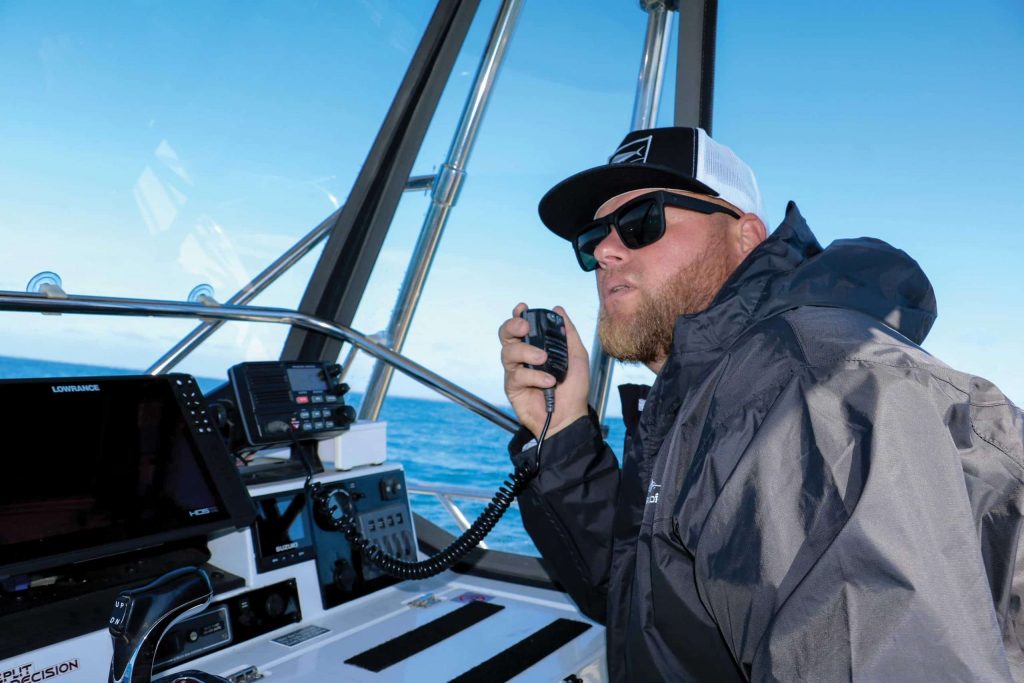
In addition to sound and light signals, VHF radios serve as a vital tool for communication between vessels and for receiving important information from external sources, such as weather updates, search and rescue operations, and navigation-related announcements. It is essential for boaters to know how to operate a VHF radio and to be familiar with the relevant radio frequencies and channels.
To ensure that all boaters can communicate effectively, they should maintain their sound signaling equipment in good working order and ensure that their lights are functioning properly. By understanding and utilizing these various signals, boaters can navigate safely and follow the rules of the road on the water.
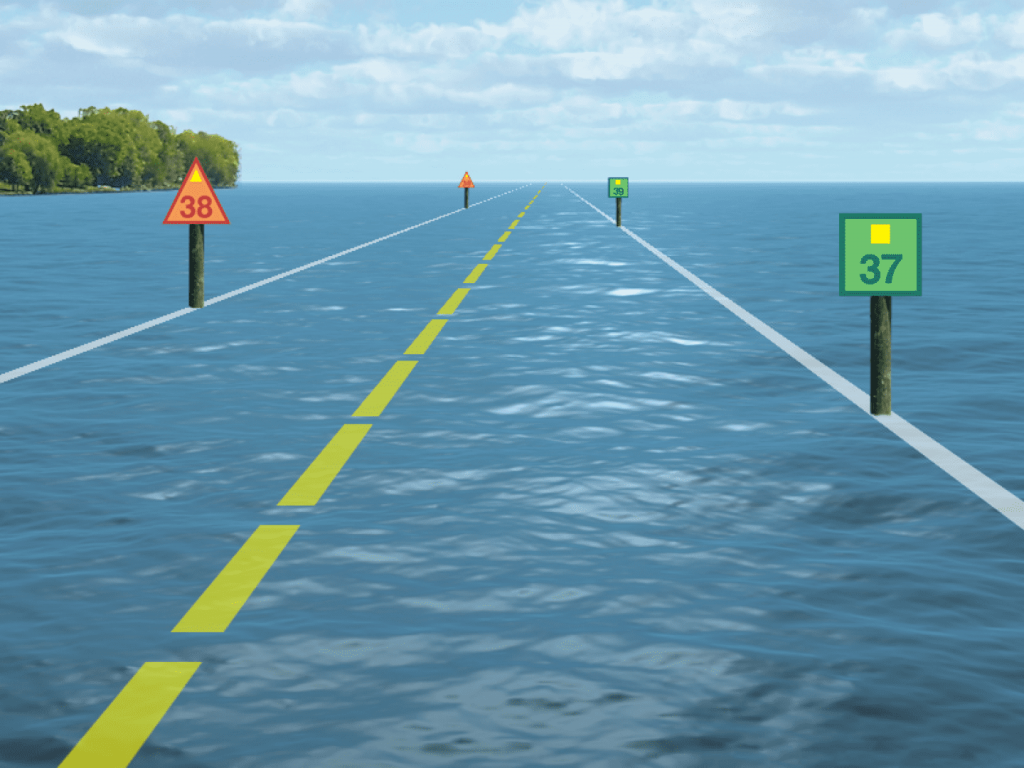
Navigation Aids and Marking
Use of Charts and Buoys
Navigating on the water requires a thorough understanding of the navigation rules of the road and the use of appropriate aids to navigation. One essential component for safe boating navigation is the use of charts, which provide valuable information such as water depth, underwater obstacles, and the locations of buoys and marks.
Buoys and beacons, often referred to as marks, are crucial elements of the aids to navigation system. They can come in several shapes, colors, and sizes, each providing specific information to help mariners to identify navigation hazards or the proper course to follow. For example, red and green channel markers indicate the sides of the channel when entering from seaward, while cardinal marks denote the safe side to pass an obstruction based on compass directions.
Lighted marks are equipped with lights that help navigators identify their characteristics at night or in poor visibility conditions. The lights can vary in color, interval, and pattern, which are crucial for determining the type of mark and understanding its purpose.
Proper use of charts and buoys is essential for safe navigation on the water. Boaters should familiarize themselves with these aids to navigation and their meanings to avoid any potential hazards, obstructions, or straying off course while boating.
Remember that, although these navigation aids are designed to guide and assist, they may not always be in their precise charted positions. It is important for boaters to stay vigilant and use additional sources of information, such as depth sounders and GPS systems, when navigating through unfamiliar waters.

Safety Measures for Boat Operators
Lookout and Speed Management
A crucial aspect of boating safety is maintaining a proper lookout and managing boat speed. Operators should always stay vigilant and keep their eyes on the water, scanning the surroundings for other vessels, obstructions, or any potential hazards. Using binoculars and relying on input from passengers can also be helpful in maintaining a proper lookout.
It's essential to operate the boat at a safe speed, which may vary depending on factors such as visibility, traffic density, and weather conditions. Operators must be prepared to slow down or stop their boat as needed to avoid collisions or other dangerous situations.
Here are a few tips for keeping a proper lookout and managing speed:
- Always maintain a 360-degree view of your surroundings.
- Use binoculars or ask passengers to help scan the area for potential hazards.
- Be aware of local speed limits or restricted areas.
- Adjust your boat's speed based on visibility, traffic, and weather conditions.
- Keep a safe distance from other boats, shorelines, or any visible obstructions.
- Be prepared to slow down or stop when necessary.
Another essential safety measure is ensuring that all passengers wear a life jacket while onboard. Life jackets can significantly increase the chances of survival in case of an accident or if someone falls overboard. Operators should ensure that there are enough life jackets onboard for all passengers, and they should be the right type and size for each person.
In summary, by maintaining a proper lookout, managing speed, and ensuring that all passengers wear life jackets, boat operators can create a safer environment for themselves and those around them.

Responsibilities and Rules Compliance
All boat operators are responsible for knowing and adhering to the maritime rules of the road to ensure the safety of everyone on the water. These rules, also known as Navigation Rules of the Road, are published by the U.S. Coast Guard (COMDTINST 16672.2 Series) and apply to all vessels operating in U.S. waters.
One of the key aspects of these rules is determining the right-of-way between vessels to avoid collisions. Each boat operator must be aware of their vessel's position at all times and know which vessel has the right-of-way in any situation. Making sure that you are familiar with these rules can help you make the right decisions and act responsibly when on the water.
In addition to understanding right-of-way rules, boat operators are also subject to Rule 2, which states that nothing in the rules exonerates a vessel from the consequences of any neglect to comply with these regulations or any action that may endanger others on the water. In other words, boat operators must exercise common sense and not blindly follow rules to the point of causing a collision or putting others at risk.

Penalties for Non-Compliance
Failure to comply with the rules of the road can result in penalties, including fines, license suspension, or even imprisonment, depending on the severity of the offense. The U.S. Coast Guard is responsible for enforcing these rules, and boat operators are required to cooperate fully with their investigations and inspections.
In addition to penalties for non-compliance with rules, boat operators may also face consequences for operating a vessel under the influence of alcohol. Operating a boat while intoxicated is a serious offense, with strict penalties enforced by the U.S. Coast Guard. These may include substantial fines, imprisonment, and mandatory boating safety education courses.
In conclusion, it is crucial that boat operators understand their responsibilities and the rules they must follow while on the water. By doing so, they can help ensure the safety of themselves, their passengers, and other vessels operating in the area.
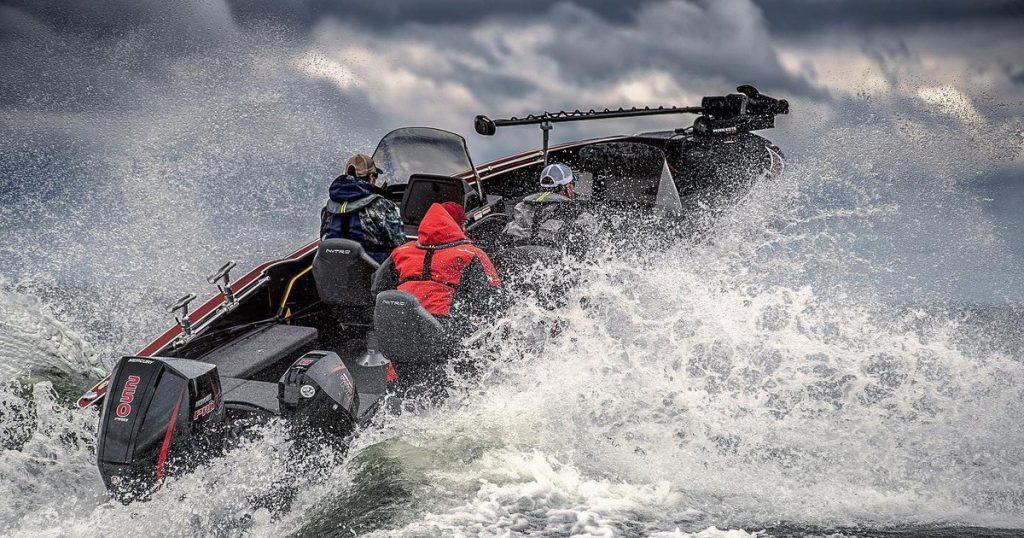
Navigating in Different Water Types
When navigating different water types, it is important to know the specific rules and regulations associated with each type of waterway. This section will provide information on navigating inland waters and international waters.
Inland Waters and International Waters
Inland waters are defined as any body of water not classified as international waters. Some examples include rivers, lakes, and canals connected to land. Inland waters may be further divided into smaller categories such as the Great Lakes and Western Rivers. When boating in inland waters, it is important to first familiarize yourself with the local and federal navigation rules.
In the United States, the primary set of rules governing inland water navigation is the Navigation Rules established by the U.S. Coast Guard. Understanding and adhering to these rules helps to ensure safe navigation and prevent encounter situations.
When navigating in inland waterways, boaters must also follow specific guidance based on the nature of the waterway:
- Rivers and Canals: Boats should travel on the starboard (right) side of the channel, keeping to the centerline. This helps to avoid collisions with other vessels and shoreline hazards.
- Great Lakes: Navigation in the Great Lakes follows the same rules as coastal waters. Boaters must adhere to established shipping lanes and maintain a proper lookout at all times.
- Western Rivers: These rivers are often characterized by narrow waterways, strong currents, and limited visibility. Boaters should exercise caution and communicate their intentions with other vessels.
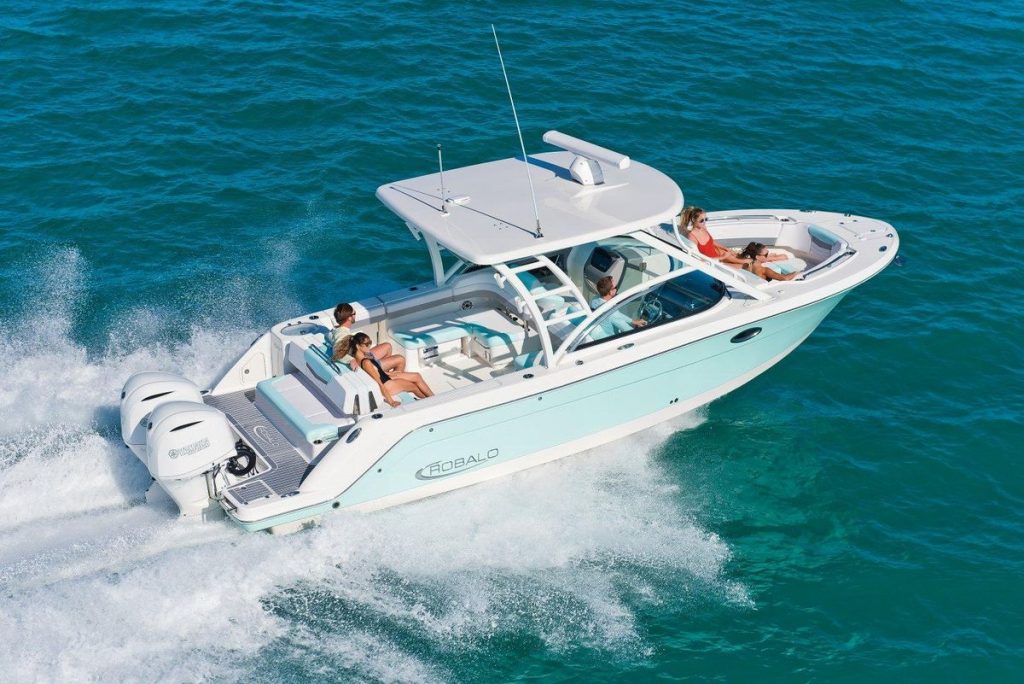
On the other hand, international waters are defined as areas more than 12 nautical miles from a nation's coast. These waters are governed by the International Regulations for Preventing Collisions at Sea (COLREGs). Boaters in international waters must follow the COLREGs, which provide similar rules and guidelines for how vessels should act in open waters, such as maintaining a lookout and abiding by the appropriate passing rules.
Understanding the different rules and regulations for navigating in inland waters and international waters is essential for safe boating. Always ensure you are familiar with the specific guidelines for each type of waterway before venturing out on the water.
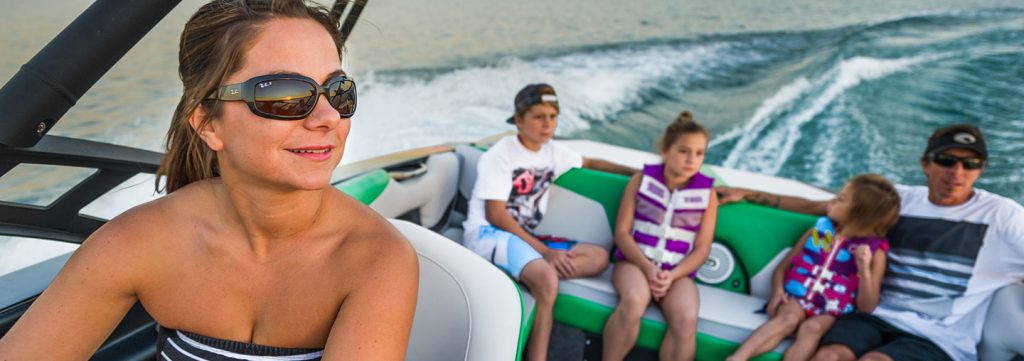
Boating Etiquette
Boating etiquette is essential for ensuring safety and enjoyment on the water. By adhering to proper guidelines, boaters can enjoy their experience with minimal conflicts or accidents. Below are some key points to be mindful of when practicing good boating etiquette.
First and foremost, it is crucial for boaters to understand the rules of the road, particularly the responsibilities of the stand-on vessel and the give-way vessel. When two boats cross paths, one boat must be designated as the stand-on vessel, while the other is deemed the give-way vessel. The give-way vessel must alter its course or speed to avoid collision, while the stand-on vessel should maintain its course and speed. Understanding and adhering to these fundamental rules ensures maximum safety for all watercraft users.
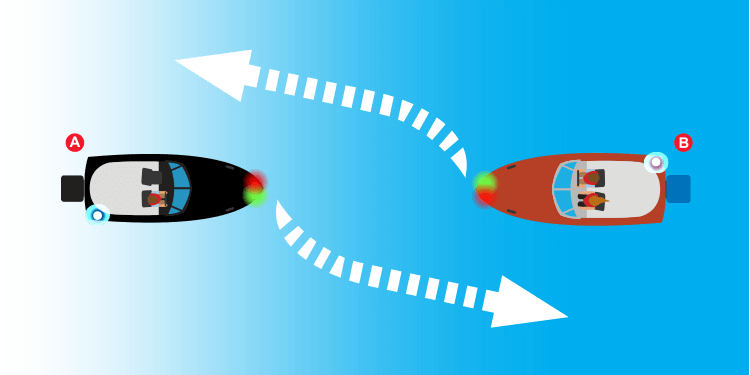
In addition to the basic stand-on and give-way rules, boaters need to respect fishing vessels and activities. When approaching a stationary boat, which is likely used for fishing or swimming, it's essential to reduce speed and provide an ample berth. This courteous behavior minimizes the disruption for those on the stationary boat and enhances everyone's experience on the water.
Respect for others also extends to common courtesy and noise control. Boaters should avoid playing loud music or engaging in disruptive activities, especially when in close proximity to others. Keeping the noise level down and being aware of those around you will ensure a pleasant atmosphere for all water-goers.
Moreover, practicing responsible waste disposal is another essential part of boating etiquette. Boaters must refrain from throwing trash overboard and should store it for proper disposal onshore. This act helps preserve the cleanliness, safety, and ecological balance of the aquatic environment.
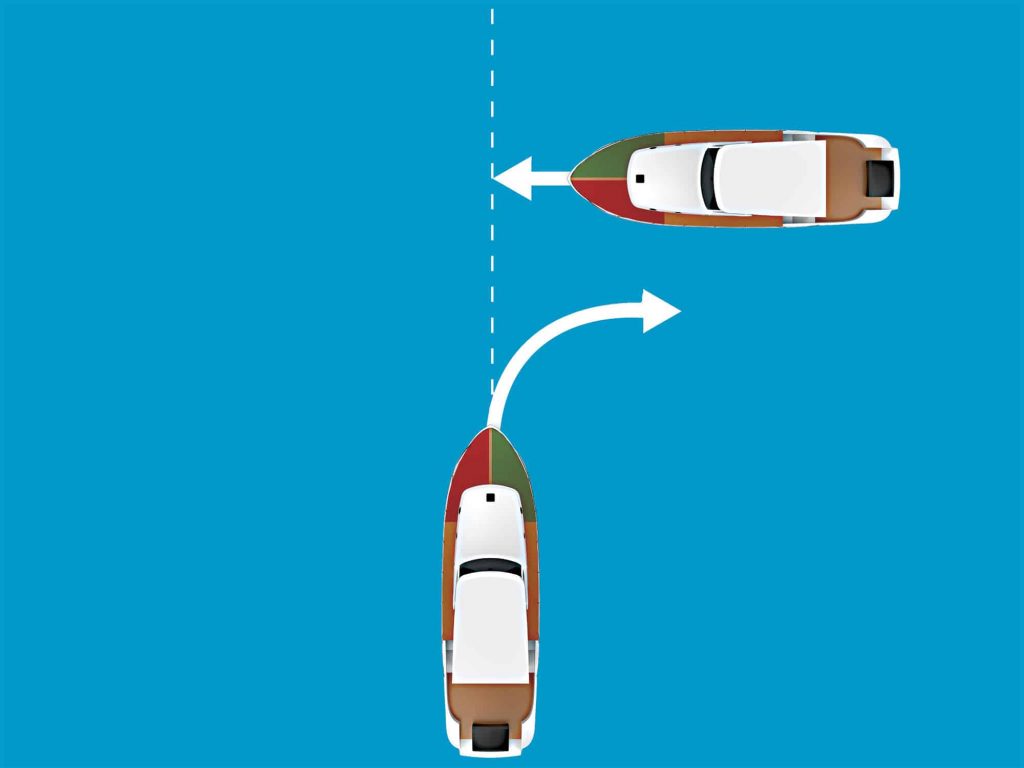
In short, boating etiquette revolves around respect, understanding, and adhering to the rules of the road. By being mindful of the stand-on and give-way vessel rules, showing consideration for those engaging in fishing or other activities, exercising courtesy regarding noise levels, and disposing of waste responsibly, boaters can contribute to a more enjoyable and safe maritime experience for everyone.
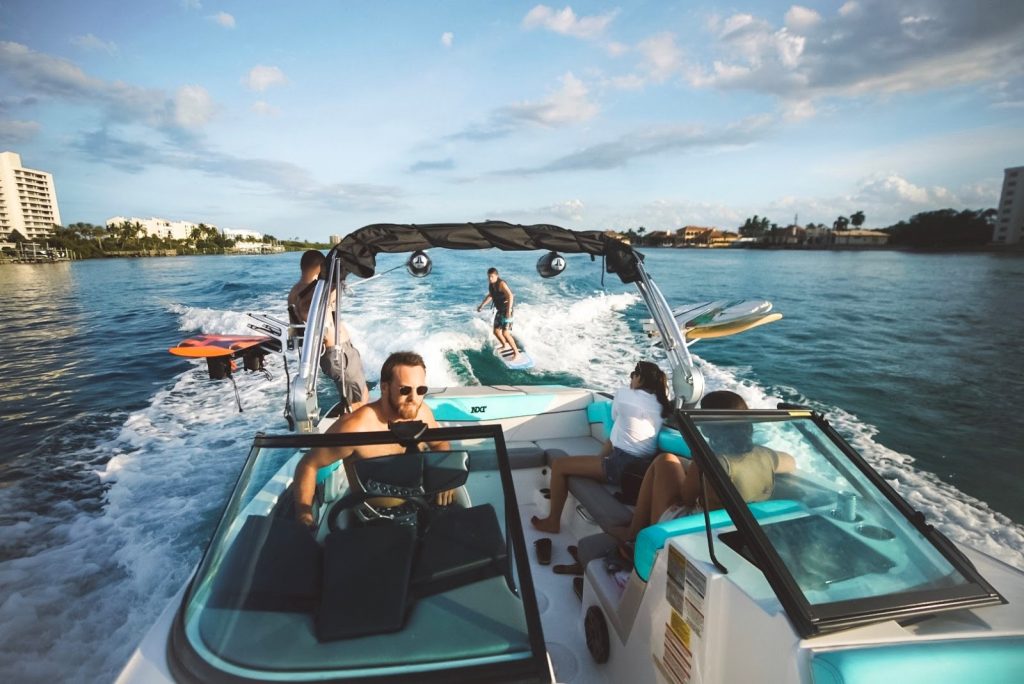
Resources for Further Information
One of the best resources for getting a comprehensive understanding of the rules of the road for boats is the Navigation Rules of the Road published by the U.S. Coast Guard (COMDTINST 16672.2 Series). This document is available through the U.S. Government Printing Office and is essential for safe and responsible boating.
In addition to the U.S. Coast Guard's publication, www.navcen.uscg.gov is an excellent source for further information, updates, and resources relating to navigation rules. This website provides valuable educational materials and references that can significantly improve one's understanding of maritime safety regulations and best practices.
For boaters who want to gain more hands-on experience or have questions about implementing the rules in real-life situations, checking out boating courses and workshops offered at their local boating supply store can also be quite helpful. These courses often cover various aspects of navigation, such as vessel hierarchy, collision avoidance, and proper passing techniques on the water.
The BoatUS Foundation offers a study guide that covers the rules of the road for boating. This resource elaborates on different types of vessels, their classifications, and how they should navigate in various scenarios. Another reliable source for boating enthusiasts is boats.com, which provides a primer on maritime rules and helps clarify any misconceptions related to relevant regulations and practices.
When exploring these resources, it's essential to remember that staying updated on the latest rules and regulations is crucial for every boater's safety and enjoyment on the water. Utilizing all the available tools and references, such as the ones mentioned above, can greatly enhance one's knowledge and confidence in navigating the waterways responsibly and safely.
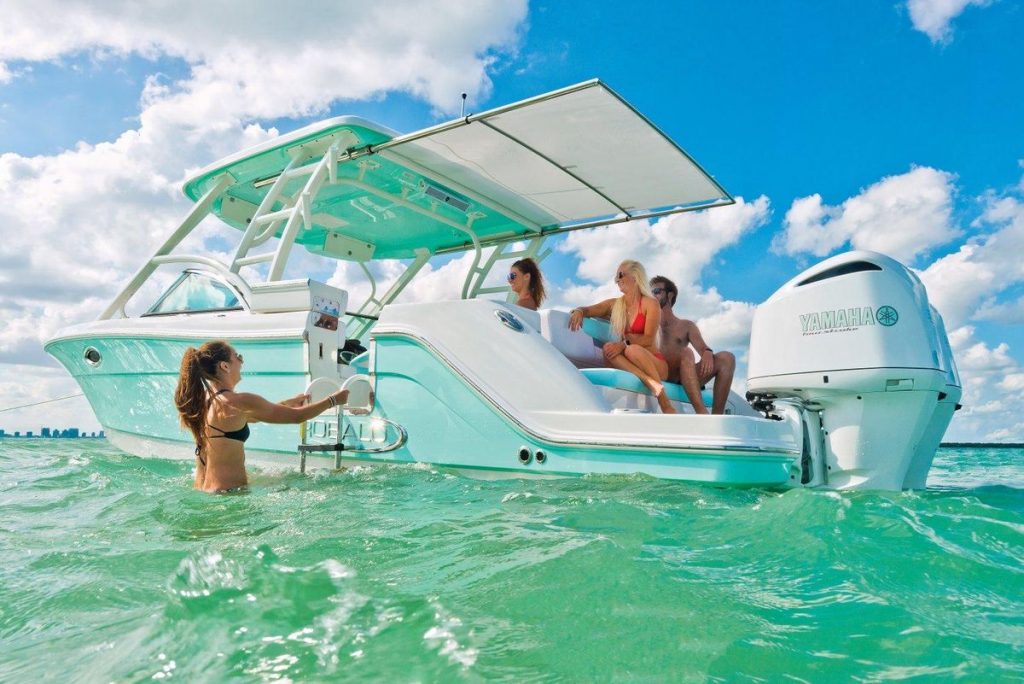
Frequently Asked Questions
What are the main right-of-way rules?
The primary right-of-way rules for boats can be summarized as follows: Vessels under sail (without auxiliary power engaged) generally have the right of way over powerboats, but exceptions exist, such as overtaking situations and crossing scenarios where the boat on the right (approaching from starboard) has the right of way1.
How are lighting requirements determined?
Lighting requirements for boats are determined according to the size, type, and operation of the vessel. Boats must display proper navigation lights between sunset and sunrise and during restricted visibility to ensure safe navigation and prevent collisions2.
When can exceptions to navigation rules be made?
Exceptions to navigation rules can be made when common sense dictates that doing so would help avoid a collision or ensure the safety of all vessels involved3. Rule 2 states that no rule exempts a boater from using common sense4.
What are the speed and distance guidelines?
Speed and distance guidelines vary by location and may differ depending on local regulations and conditions. In general, boaters should maintain a safe speed at all times and stay at least 100 feet away from shorelines, docks, swimmers, or other boats5.
How do lake boating rules differ from maritime?
Lake boating rules are generally similar to maritime rules, but differences may occur due to local regulations or conditions. Inland bodies of water may have additional restrictions on speed limits, operating hours, or available activities.
Are there specific rules for maneuvering in narrow channels?
Yes, there are specific rules for maneuvering in narrow channels. Boats should generally keep to the right side of the channel and avoid impeding the passage of larger vessels that may have limited maneuverability6.
Footnotes
- https://www.discoverboating.com/resources/boating-right-of-way ↩
- https://www.boatus.org/study-guide/navigation/lights/ ↩
- https://www.boats.com/how-to/maritime-rules-of-the-road-a-primer-for-boaters/ ↩
- https://www.boats.com/how-to/maritime-rules-of-the-road-a-primer-for-boaters/ ↩
- https://www.rentalboatsafety.com/rental-boats/rb-safety ↩
- https://boatus.org/navigation-rules/ ↩
Charlie is Editor-in-Chief of Sea Magazine